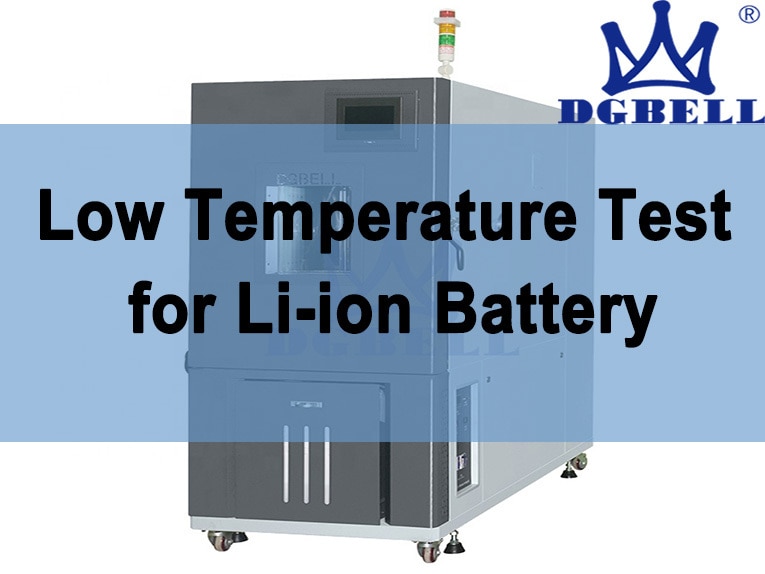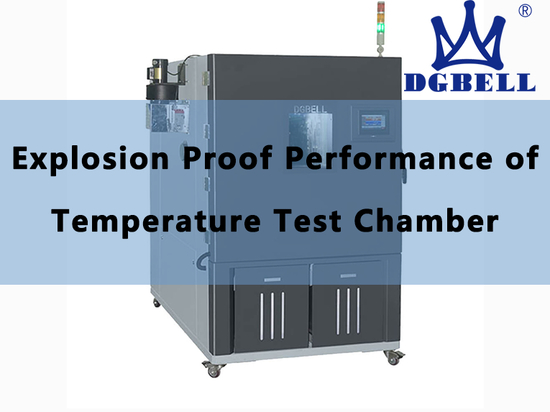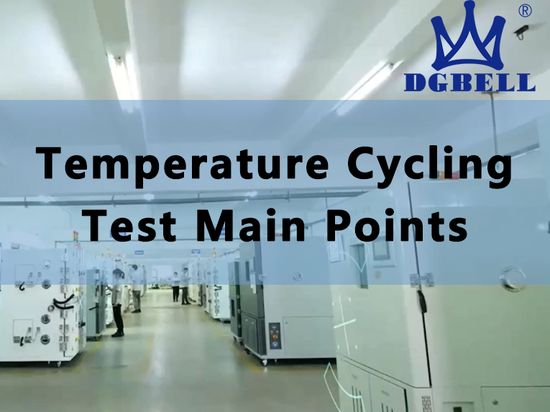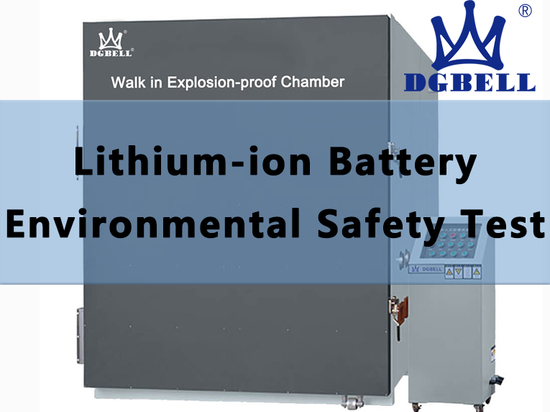
#Industry News
Low Temperature Test for Li-ion Battery
Low Temperature Test for Li-ion Battery
Lithium iron phosphate battery is a very potential lithium-ion battery in the current market. At present, the research on Lithium iron phosphate battery mainly focuses on Battery management system and state of charge estimation. Its performance needs further research, especially its low-temperature performance. At present, the discarded equipment used for Antarctic scientific research is basically powered by Lead–acid battery, which causes serious pollution.
However, the specific power and specific energy of Lithium iron phosphate battery are higher than those of lead-acid batteries, with low self discharge rate and environmental protection, and they are more suitable for Antarctic. The perennial cold gale in Antarctic, such as the Kunlun Station, which is located at the highest altitude in Antarctica, has an annual average temperature of -58.4 ℃ and a minimum temperature of -82 ℃. This paper simulates the Antarctic low-temperature environment, conducts charging and discharging experiments on Lithium iron phosphate battery under different low-temperature environments, and analyzes the experimental results, providing a basis for battery selection and heating system design.
1.Battery charging test
In this test, a DC stabilized power supply was used to charge the battery, and a high and low temperature alternating test chamber was used to simulate a polar low-temperature environment. The constant current charging current and maximum allowable charging voltage of the DC stabilized power supply were set. The charging currents set in the experiment were 1, 2, and 3A, respectively, and the charging cutoff voltage was 14.7V. When the battery was charged to 14.7V, the power supply stopped constant current charging and began constant voltage charging, The battery charging process is as follows: in the initial stage, the current is in a constant current charging state. As the charging process continues, the battery voltage gradually increases. When it approaches 14.7V, it switches to constant voltage charging, and the specific current gradually decreases to around 0.2A.
In low temperature environment, lithium ion of lithium embedded graphite is difficult to be embedded into graphite anode below -20 ℃, so the charging acceptance ability of Lithium iron phosphate battery will be reduced, and the charging rate will be greatly reduced in low temperature environment than in normal temperature. During the charging process, the internal temperature of the battery will often rise, which will have a negative impact on the charging of the battery at room temperature. However, the rise in temperature during charging at low temperature will improve the charging efficiency of the battery. Due to the significant decrease in the charging capacity of batteries when charged in low-temperature environments, in order to study the charging performance of batteries in low-temperature environments, the batteries were placed in different low-temperature environments and charged at constant current and voltage with different currents. In this experiment, low current charging is used to increase the charging acceptance rate of the battery. The charging current is 1, 2 and 3A respectively. Under the ambient temperature of normal temperature, -10, -20 and -30 ℃, the Lithium iron phosphate battery is charged at constant current and voltage. There are 12 groups of experiments in total. Data are collected and analyzed.
Charge the Lithium iron phosphate battery at constant current and voltage with 3A current, and collect and store data every 10min. From the data, it can be seen that during the initial stage of charging, the battery is charged at a constant current of 3A. The voltage changes significantly, and the voltage curve rises sharply to around 13V, entering a voltage plateau period. The curve rises gently, and finally the voltage remains constant. The current begins to decrease, decreasing to around 0.2A, and charging ends.
It can be seen from the comparison that, with the decrease of the ambient temperature, when the Lithium iron phosphate battery is charged with the same current and constant voltage, the time for the voltage to enter the plateau period will be shortened. The number of times of collection starts to enter the voltage plateau period at about 50 times at normal temperature, about 40 times at -10 ℃, about 20 times at -20 ℃, and less than 20 times at -30 ℃; The overall upward trend of battery voltage remains unchanged, but the lower the temperature, the faster the battery reaches the set voltage value, which means the shorter the time to complete the charging process. At room temperature, the battery completes the charging process when the collection frequency is 400 times, 300 times at -10 ℃, 200 times at -20 ℃, and 120 times at -30 ℃. During the experiment, it was also found that when charging with constant current and voltage at the same current, the charging stages for constant current and constant voltage are different at different environmental temperatures. The lower the temperature, the shorter the constant current charging stage, and even directly enter the constant voltage charging stage. Therefore, when charging the battery in the same way, the lower the temperature, the shorter the charging completion time.
2.Battery discharge test
In this experiment, the Lithium iron phosphate battery was discharged by constant current discharge, and a high-precision battery capacity tester was selected for the discharge experiment. This experiment is a low current discharge, and the discharge current of the tester is set to 2A. In order to fully discharge the battery, the discharge cutoff voltage is set to 9.5V.
In order to study the discharge performance of batteries in low-temperature environments, fully charged batteries were placed at different environmental temperatures and subjected to constant current discharge at the same current. In this experiment, small current discharge is used to improve the discharge efficiency of the battery, because in the low temperature environment, small current discharge is used, the current is evenly distributed on the battery electrode, and the chemical reaction inside the battery is fully carried out, which can increase the discharge depth of the battery. In this experiment, 2A current was used to discharge Lithium iron phosphate battery at room temperature, -10, -20, -30 ℃, a total of 4 groups of experiments.
In the initial stage of battery discharge, there will be a sharp drop in voltage, followed by a gradual decrease that lasts for a long time. At the end of discharge, the voltage will sharply drop to the cut-off voltage. The experimental results show that at the same discharge rate, the initial discharge voltage of the battery decreases with the decrease of temperature. The initial discharge voltage is 14.48V at room temperature, 14V at -10 ℃, 13.6V at -20 ℃, and 13.3V at -30 ℃.
The voltage of Lithium iron phosphate battery will drop suddenly at the beginning of discharge. This is because when discharging the battery in a low-temperature environment, when the battery temperature begins to decrease, the active substances participating in the reaction inside the battery decrease and cannot fully react, resulting in an increase in the polarization effect of the battery. Therefore, in the initial stage of battery discharge, the terminal voltage drops sharply to about 13.3V, and the left and right battery voltage begins to maintain stable discharge, with slow voltage changes. As the battery discharge continues, the internal resistance of the battery increases, the internal temperature of the battery increases, and a portion of the active substances in the battery are activated. When the voltage drops to approximately 12.5V, the battery voltage suddenly drops again. As the temperature of the battery continues to rise, the internal resistance of the battery decreases, and the heat generated inside the battery decreases. However, the ambient temperature remains at 10 ℃, so the temperature of the battery begins to decrease and the voltage also decreases.
The voltage of Lithium iron phosphate battery changes very quickly in the initial stage of discharge and the final stage of battery capacity depletion, while the discharge voltage in the plateau stage does not change much, which indicates that the battery can work stably under the voltage in the plateau stage. From the above analysis, it can be seen that the discharge time of Lithium iron phosphate battery will be shortened with the decrease of ambient temperature, indicating that the discharge capacity of Lithium iron phosphate battery is gradually weakened. The collection times of battery full discharge at room temperature are about 270 times, the collection times of battery full discharge at -10 ℃ are about 220 times, the collection times of battery full discharge at -20 ℃ are about 100 times, and the collection times of battery full discharge at -30 ℃ are about 90 times. When the battery is discharged with constant current, The overall trend of the decrease in discharge voltage remains unchanged.
3.Conclusion
The Lithium iron phosphate battery was tested. The laboratory’s high and low temperature alternating test chamber was used to simulate the Antarctic low-temperature environment, and the charge and discharge experiments of Lithium iron phosphate battery under different temperature conditions were carried out with a DC regulated power supply and a battery capacity detector. The conclusion was drawn that when the battery was in a low-temperature environment, with the continuous decrease of temperature, the initial discharge voltage platform of Lithium iron phosphate battery gradually decreased, the charge and discharge time gradually decreased, and the charge and discharge capacity decreased.
The decrease in temperature will significantly affect the charging and discharging performance of the battery; When the ambient temperature of the Lithium iron phosphate battery is -10 ℃ or below, the charge of the battery with low current is more than that with high current. It can be seen from the above conclusions that the performance of the Lithium iron phosphate battery becomes worse at low temperature. The charge discharge capacity of the battery is considerable at -10 ℃. Therefore, when it is used in Antarctic, it can be considered to heat the battery to about -10 ℃.







